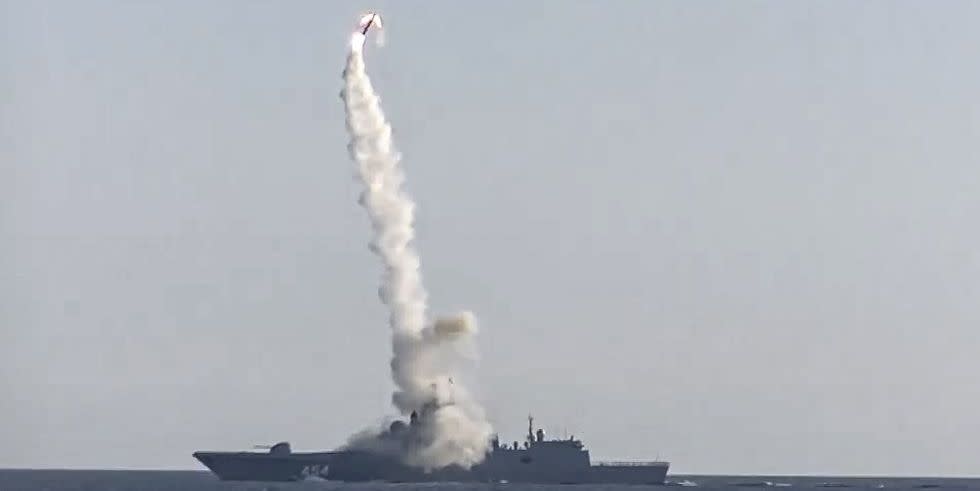Turns Out Russia Is Overselling Its 'Unstoppable' Hypersonic Missile

You can’t spell “hypersonic” without “hype,” and right now, the much-talked-about Mach 5 weapons system is an obsession of the world’s largest militaries.
China successfully tested a Mach 5 weapon back in 2021—with one U.S. general calling the launch a near “Sputnik” moment—and Russia has been talking about the weapons since 2018, when it produced a sizzle reel of one hypersonic missile, the Kh-47M2 Kinzhal, blowing up Florida. Not to be outmatched, the U.S. has around 70 (yes, seven-zero) efforts to develop hypersonic technologies including bombers, missiles, and the engines to power them.
In fact, just this week, Vladimir Putin announced imminent plans to test his frigate-launched Zircon hypersonic missile, which can supposedly reach speeds of Mach 9. The embattled Russian leader took part in the farewell ceremony (albeit remotely) of the Admiral Gorshkov frigate back in January, and the ship will launch the missile during a training exercise with South Africa and China navies later this month. Russia says it’ll be “the first-ever [launch] during an event of this kind,” though the launch is likely a show of force to the West more than anything.
While an “unstoppable” Russian missile would certainly be a problem for the U.S. (along with most of Europe), Putin might be overselling the weapon’s capabilities.
In 2021, Nikolai Yevmenov, commander-in-chief of the Russian Navy, told a Russian news site that the weapon still had problems—and some of those problems are likely highlighted in a new report by the U.S. Congressional Budget Office.
While the 72-page report did find that hypersonic missiles “have the speed to be useful in the early stages of a conflict,” the report also threw some cold water on the red-hot hype surrounding hypersonic technology. The biggest dose of reality is that the technology still hasn’t found a way to manage the immense amount of heat produced by a system traveling in excess of Mach 5.
From the report:
“Shielding hypersonic missiles’ sensitive electronics, understanding how various materials perform, and predicting aerodynamics at sustained temperatures as high as 3,000° Fahrenheit require extensive flight testing. Tests are ongoing, but failures in recent years have delayed progress.”
The second big bummer is cost. While some 300 ground- or sea-launched, intermediate-range ballistic missiles cost $13.4 billion (which isn’t exactly a pittance in itself), the same number of hypersonic missiles would cost closer to $18 billion.
The report also mentions that while a hypersonic ability to avoid air defense systems is pretty good, ballistic missiles aren’t slouches and “are also difficult to defend against, particularly if they are equipped with countermeasures to confuse midcourse missile defenses and maneuverable warheads to defeat short-range missile defenses.”
Hypersonic missiles, engines, planes, and bombers will no likely continue developing at speeds befitting their Mach 5 capabilities. But at least according to this report, the era of hypersonic weapons completely redefining modern warfare is still a ways off in the future.
You Might Also Like


